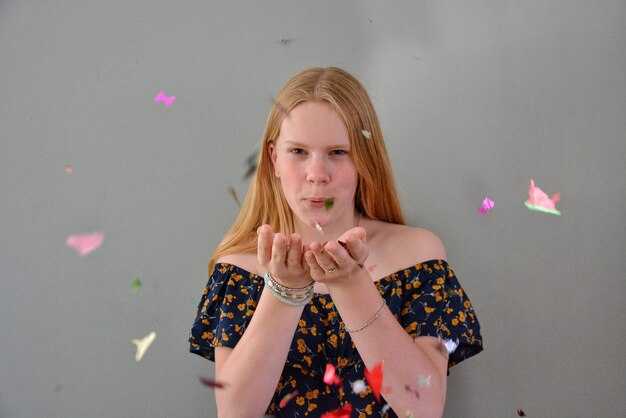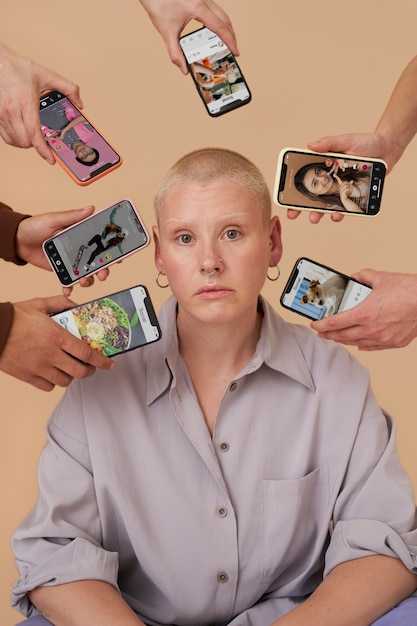Have you ever been in a relationship where one week he’s texting every morning, planning dates, and looking at you like you’re the only person who matters, and the next week he turns cold and distant, leaving you replaying every interaction wondering what went wrong? Here’s a hard truth: that unpredictability isn’t random or simply “busy.” It’s a pattern — the avoidant love cycle — a push–pull dynamic that allows him to savor the emotional highs of being in love while avoiding the risks of true intimacy. If this is happening to you, hear this clearly: it’s not a sign that you’re inadequate. It’s a strategy he’s using to manage his fears, his emotions, and his need to stay in control. This pattern repeats so often that once it’s recognized, it can’t be unseen. Below is a breakdown of the six stages of that cycle, how it snares you, and what it takes to break free so you stop reacting to his swings and begin reclaiming your power. First comes the push. This is when things start to feel “off” — slower replies, canceled plans, emotional withdrawal — and you find yourself scanning past conversations asking, “Did I do something wrong?” The reality is the push isn’t about a mistake on your part. It’s about engineered scarcity. Avoidant partners often learned early on that too much closeness feels threatening, so when availability and consistency make them feel like they might actually need someone, they instinctively carve out space. They pull away because distance is where they can miss you without having to be vulnerable. Crucially, the push isn’t a sign of fading love; it’s when they feel most alive emotionally because they can idealize you from a safe remove. They get the thrill of desire without the risk of dependency. And here’s how it hooks you: sensing the chill, your instinct flips into “fix it” mode. You message more, explain more, try harder to prove you’re worth keeping close. That very pursuit feeds the cycle — your reactions reassure his nervous system that control is intact. Think of him intentionally lowering the emotional thermostat so that when warmth returns it feels intense and addictive. If that pattern goes unrecognized, the push becomes the first half of a system designed to protect him and to keep you tethered. Next is the pull, the phase that reels you back in. Many misinterpret this as a sudden awakening or a heartfelt commitment, but it’s actually relief — his relief. After distancing himself, the empty loneliness eventually numbs him, and his conditioned response is to re-connect. Texts flood back in, calls resume, affection returns, romantic gestures may appear, and he might even open up about something personal. In that electric moment it feels like magic, but the reconnection is less about you as a partner and more about him reclaiming the capacity to feel. You become the switch that jolts him back to life. The pull provides a powerful emotional high — an intense but temporary relief — rather than the steady, mutual vulnerability that defines real intimacy. Because that high is intoxicating, it’s easy to believe this time will be different: promises are made, the future is discussed, and he sounds sincere. That apparent sincerity is driven by flood of feel-good chemicals, not by a true readiness to change the pattern. The danger is that the instant you relax and let yourself feel safe again, the intensity fades for him; uncertainty is the fuel he needs for emotional intensity. So the pull inevitably sets the scene for another push. This swinging back and forth isn’t accidental; it’s how his emotional regulation works. Picture it as a thermostat: the push cools things when closeness feels too hot and risky; the pull warms things when distance becomes too cold and numb. Neither state holds. He oscillates not to punish, but because this cycle is his learned method of managing feelings — and you become part of that apparatus. Each time you wait out a push, he learns he can take space without losing you, and each time you rush to reunite, he learns reconnection can deliver the high without sustained vulnerability. Eventually the pattern ceases to be about the two of you and becomes the relationship itself. The repetition’s toll is heavy: you start reshaping yourself just to survive it. Anticipating pushes, clinging to pulls, believing that roller-coaster moments equal progress — none of it is genuine love; it’s conditioning. Your brain bonds harder during pulls because the relief is so potent compared to the prior pain, creating an intermittent reward loop — one of the most addictive behavioral patterns there is. Over time you might realize you’ve been in motion without moving forward. That leads to the unconscious contract, the hidden bargain entered into without explicit consent. By staying, you effectively become his emotional regulator. During a push you provide the resistance that lets him pull away and feel the thrill of later pursuit; during a pull you supply the relief that fuels his emotional comeback. The cycle depends on your hurt during distance and your gratitude during reunion, because those reactions magnify his highs and lows. Avoidant people often select partners who will unknowingly accept this role — empathetic, patient, understanding types who are likely to give space and return with open arms. In tiny, everyday ways — smoothing things over in texts, opening the door when he returns, forgiving with the hope of “this time it’ll be different” — you sign that contract without realizing it. The good news: contracts can be broken. The moment you stop serving as his thermostat, the loop begins to destabilize. One of the most deceptive parts of the cycle is the progressive fantasy, the illusion that convinces you real change is underway when it’s only another setup. This occurs during the pull when his warmth, confessions, and promises feel like momentum toward growth. After the deprivation of the push, even modest closeness registers as massive progress. The resulting dopamine reinforces attachment, and for him it’s the ideal outcome: the emotional high without the discomfort of long-term intimacy. True growth, by contrast, looks like staying connected through awkwardness, tolerating discomfort, and practicing sustained vulnerability. The progressive fantasy bypasses that slow, ordinary work and sells hope without the foundation to make it last. Because it feels so transformative, it’s easy to ignore that nothing fundamental has shifted — his fears and limitations remain. That’s why people can spend years convinced they’re “working things out” when really they’re just getting better at riding the same ride. The fantasy trains you to equate intensity with progress, mistaking the rush of reunion for proof of love when it’s actually proof of the pattern. Finally comes the tragic ending, the stage most don’t foresee until it’s too late. After countless cycles, what the pattern was meant to protect — the possibility of a secure, lasting love — is worn away. Each repetition erodes trust and chips away at safety until minor fractures become deep fault lines. Love stops being a refuge and starts to feel unpredictable or unsafe for him, and the relationship becomes centered on maintaining the cycle rather than building a life together. He’s no longer relating to the person beside him; he’s tending to the pattern that keeps him secure. For the partner on the receiving end, identity and expectations shift: consistent, grounded love becomes a forgotten experience, and the chaos begins to feel normal. Eventually, even the most patient person reaches a limit and steps off the ride. When that happens, the avoidant is left with a functioning emotional regulation system and nobody to run it with. Panic often follows — frantic attempts to pull the person back — but typically that desperation stems from losing the mechanism, not from a sudden revelation about worth. The heartbreaking result is self-protection so fierce it eliminates both love and safety. What remains is a choice: carry those scars into another relationship or do the healing work to rebuild and remember that real love doesn’t have to be chaotic. Now the pattern is clear: push, pull, repetition, unconscious contract, progressive fantasy, and the ending. It’s not personal failure; it’s a system — and systems collapse when participants stop performing their parts. That means refusal to chase during the push, refusal to dissolve at the pull, and refusal to prove worth every time he withdraws. Shift focus from managing his emotional thermostat to fortifying your own emotional base. Invest energy in what makes life feel whole and grounded, whether he’s present, distant, or gone. When this happens, the cycle can’t run: he will either learn to offer steady, consistent love or fade away. Either outcome is a win, because peace won’t be outsourced to his moods any longer. The turning point begins with one decision: “I will not be someone’s emotional survival tool; I deserve steady, wholehearted love.” What happens when a person finally steps out of the cycle for good? The dynamic flips. The man who could casually push you away may suddenly be unable to tolerate silence. The one who kept you at arm’s length could become the one pounding on the door, flooding messages in an attempt to drag you back in — not because of a true awakening to your value, but because the regulating system he relied upon has collapsed. Without that push–pull mechanism, his nervous system can panic. A follow-up video will explain precisely what triggers that panic on psychological, emotional, and neurological levels so the response can be seen for what it is and not mistaken for real change. Understanding that moment can prevent a return to the very cycle that was just escaped. Click here to watch it now and make sure the avoidant love cycle never ensnares you again.
Practical steps and tools to protect yourself and break the cycle:
How to recognize the pattern quickly
- Track cycles: notice if distancing and intense reconnects repeat on a predictable timeline (days, weeks, after certain milestones).
- Separate content from pattern: evaluate behavior across time (promises vs. consistent actions).
- Watch your reactions: if you consistently escalate efforts when he withdraws, the cycle is using you — not the other way around.
Concrete boundary actions that work
- Set clear limits for absence: “If you need space, tell me how long. I’ll respect that for X days; after that we’ll check in.”
- Refuse to fixate: decide in advance what you’ll do during a push (go out with friends, focus on a hobby, not send repeated check-in messages).
- Require consistency, not apologies: ask for small, measurable actions (three check-ins per week, a shared plan to resolve conflict) rather than promises of “being different.”
Short scripts to use in the moment
- During a push: “I notice you’ve been distant. I care about you, but I also need predictability. Let me know when you want to talk and I’ll meet you there.”
- When he returns with intensity: “I appreciate you reaching out. I want changes that last. What will you do differently next time?”
- If he pressures you after you step away: “I stepped back to protect my well-being. I’m open to reconnecting only if we can agree on steps that keep both of us safe.”
Self-care and rebuilding your base

- Reinvest in your life: schedule regular activities, friends, work, and hobbies so your emotional equilibrium doesn’t depend on his availability.
- Develop self-soothing tools: grounding exercises, breath work, journaling prompts (What do I need right now? What would a steady partner do?), and a short list of supportive people you can call.
- Therapy and support: individual therapy (look for clinicians familiar with adult attachment and Emotionally Focused Therapy), support groups, or coaching to rebuild boundaries and self-worth.
When to consider leaving
- Repeated cycles persist despite you setting firm boundaries and asking for change.
- You feel diminished, anxious, or less yourself most of the time.
- The relationship’s primary pattern is regulation rather than mutual growth and mutual care.
How to respond if he panics after you leave
- See the panic for what it is: loss of a regulation tool, not necessarily sudden love or readiness to change.
- Ask for evidence: request consistent behaviors over time before considering return (e.g., steady communication for several weeks, therapy attendance, concrete conflict-handling plans).
- Keep your standards: re-entry should require sustained change, not high-emotion declarations alone.
Önerilen kaynaklar
- Books: “Attached” by Amir Levine & Rachel Heller; “Hold Me Tight” by Dr. Sue Johnson; “Wired for Love” by Stan Tatkin. These introduce attachment dynamics and concrete strategies for safer connection.
- Therapy approaches: look for clinicians trained in Emotionally Focused Therapy (EFT) or attachment-informed therapy for couples and individuals.
- Online: attachment-style questionnaires and reputable articles from licensed clinicians can help you name the pattern and plan next steps.
Final note: breaking this cycle isn’t about punishment, control, or proving anything to him — it’s about protecting your emotional life and teaching by example what steady, consistent love looks like. When you live as if you deserve that love, you either attract someone who can give it or you create the conditions to heal before the next relationship. Both outcomes restore your agency and peace. If you’re ready, start with one boundary today, keep it simple, and observe what changes. You don’t need to ride the roller-coaster any longer.


 The Avoidant Love Cycle Too Many Women Miss — Don’t Let It Pull You Back | Best Motivational Speech">
The Avoidant Love Cycle Too Many Women Miss — Don’t Let It Pull You Back | Best Motivational Speech">


 The ONLY thing that WORKS with a Narcissist">
The ONLY thing that WORKS with a Narcissist">
 THIS Is How You Know an Avoidant Is Finally Ready to Fight for Your Relationship">
THIS Is How You Know an Avoidant Is Finally Ready to Fight for Your Relationship">
 This Mindset Strengthens You to Overcome Childhood Trauma">
This Mindset Strengthens You to Overcome Childhood Trauma">
 The Avoidant’s Final Dirty Trick (When They Know You’ve Stopped Caring)">
The Avoidant’s Final Dirty Trick (When They Know You’ve Stopped Caring)">
 Don’t Let Manipulative “Poly” Friends Push You to Self-Abandon">
Don’t Let Manipulative “Poly” Friends Push You to Self-Abandon">
 20 Signs That Signal YOU Are Partner Material">
20 Signs That Signal YOU Are Partner Material">
 The Truth about Spontaneous Vs Responsive Desire⧸Arousal">
The Truth about Spontaneous Vs Responsive Desire⧸Arousal">
 Karımı ANLAYAMADIM ta ki BUNU yapana kadar.">
Karımı ANLAYAMADIM ta ki BUNU yapana kadar.">
 How to be a GREAT Husband">
How to be a GREAT Husband">